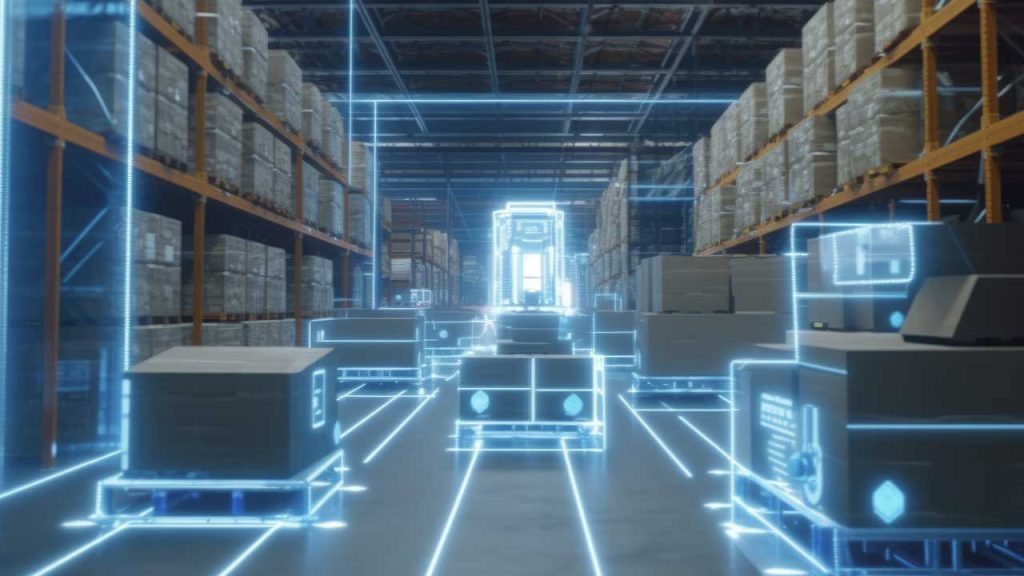From APIs to Digital Twins: Warehouse Integration Strategies for Smarter Supply Chains
The landscape of warehousing and supply chains is changing rapidly. Modern manufacturers, distributors, and energy companies face rising customer expectations for speed and transparency; for example, over 90% of U.S. consumers now expect 2–3 day delivery and one-third expect same-day shipping. To meet these demands, businesses are turning their warehouses into smart, connected hubs. This means integrating Warehouse Management Systems (WMS), Transportation Management Systems (TMS), ERP platforms, and carriers through advanced technology. Such integration – spanning IIoT sensors, cloud APIs, robotics, AI, and digital twins – reduces manual work, slashes lead times, and boosts agility and resilience across the supply chain.
Key Technologies Powering Smart Warehouses
Modern warehouses leverage several cutting-edge technologies.
IIoT and Connectivity
Industrial IoT (IIoT) sensors on machines, vehicles, and storage racks collect real-time data on location, condition, and performance. For example, IoT devices on oil rigs and pipelines can share drilling and pressure data to a central system, creating “incredible efficiency” in remote energy operations. In manufacturing, embedding IIoT sensors has yielded notable gains: one packaging manufacturer saw overall equipment effectiveness (OEE) rise by 9%, enabling $25M in avoided capital costs through predictive maintenance. These live data streams feed analytics and automation platforms, giving supply chain managers up-to-date visibility and early warnings of disruptions (e.g. equipment failures or bottlenecks).
APIs and Cloud Integration
Companies use API-based cloud platforms to connect warehouses, carriers, and supply chain software. Cloud-based platforms and APIs are essential for linking systems and partners. APIs allow your WMS or ERP to talk to carriers’ systems, TMS tools, and customer portals in real time. Instead of batch EDI transfers, APIs facilitate instant rate shopping, order booking, label printing, and shipment tracking. For example, modern logistics integrations use APIs to automate the full order fulfillment flow, from placing a freight tender to updating shipment status, which cuts manual tasks and errors. By unifying data in the cloud, every stakeholder (from procurement to shipping) sees the same information, so inventory counts, order changes, or carrier updates propagate instantly across systems.
AI and Machine Learning
AI and ML bring data-driven intelligence to warehousing. Advanced forecasting algorithms predict demand and suggest optimal replenishment schedules, reducing stockouts and overstocks. Machine learning models can automatically assign orders to the best carriers or shipping methods based on historical performance and cost factors. As a result, companies see faster, more accurate fulfillment. For instance, AI-powered optimization through digital twins and simulations has been shown to improve on-time delivery by ~20% while cutting labor costs by 10%. These systems continually learn from new data, making operations faster, more reliable, and more adaptive to change.
Robotics and Automation
Warehouse worker using voice-guided picking technology in an automated fulfillment center. Automated equipment, from robotic pickers to autonomous mobile robots (AMRs), moves goods with high speed and accuracy. Voice-directed picking systems (workers wear headsets that guide them by voice) and pick-to-light racks eliminate paper pick lists and human error. Warehouses report dramatic throughput gains: for example, deploying robots often yields 200–300% faster pick rates, and digitizing processes can boost worker productivity by ~25%. These automated systems integrate tightly with WMS platforms. As items are scanned and picked, inventory and order statuses update instantly, triggering next steps (like auto-printing shipping labels or booking carrier pickups). Continuous automation (24/7 operation of AS/RS cranes, shuttles, and conveyor robots) also ensures peak capacity during demand surges without extra labor.
Digital Twins and Simulation
Digital twins create virtual replicas of warehouses and supply chains for monitoring and testing. A digital twin ingests live data from IoT sensors, machines, and transportation feeds to simulate how changes affect outcomes. For instance, GE’s “Digital Wind Farm” project feeds sensor data from each turbine into a cloud model, suggesting performance tweaks that boost energy output by ~20% (worth ~$100M more revenue per turbine). In warehousing, digital twins can model workflows (layout changes, staffing shifts, equipment usage) to identify bottlenecks or test improvements before physical changes. Paired with AI, these twins become predictive and prescriptive: companies can run thousands of what-if scenarios (like a port strike or demand surge) and adjust plans accordingly. One study found that applying digital twin-driven planning helped a global manufacturer cut freight and damage costs by ~8%. Over time, this leads to more cost-efficient routes, optimized inventory levels, and a “self-healing” supply chain that adapts automatically to disruptions.
Integration Strategies for a Unified Supply Chain
To harness these technologies, companies must integrate them into cohesive processes. Key strategies include:
- Connecting WMS, TMS, and Carriers: Use APIs or integration platforms so every system shares data in real time. For example, your WMS can automatically pull live freight rates and book shipments through carrier APIs, eliminating manual quoting. A unified cloud platform ensures order, inventory, and transport information is visible enterprise-wide.
- Standardized Data Exchange: While many firms still use EDI for documents, modernizing means adding real-time APIs. A hybrid EDI+API approach lets businesses benefit from instant updates. For instance, APIs can push shipment status to customers and sales reps without waiting for next-day EDI batch feeds, improving transparency and responsiveness.
- Automated Workflows and Rules: Build business rules into your systems. Orders can auto-route to preferred carriers based on destination, weight, or service level. Exceptions (e.g. over-sized freight) can trigger approvals or alternate routing. When rules and AI logic are embedded in the workflow, tasks like tendering loads, consolidating orders, and issuing invoices can run automatically.
- Cloud Collaboration Platforms: Use cloud-based control towers or supply chain platforms that centralize data. When sales, warehouse, and logistics teams view the same dashboard, coordination improves. For example, if an IoT sensor reports a machine breakdown, dispatchers immediately see a reduced output forecast and can reschedule shipments or adjust carrier plans. Research shows that such end-to-end visibility and automation cuts lead times and errors, one analysis found that integrated digital supply chains automated order processing and shipping updates, greatly shortening fulfillment cycles.
Treat carriers and 3PLs as extensions of your operation. The right freight carriers (or 3PL partners) support your technology stack. In practice, this means choosing carriers with open APIs/EDI and broad networks, so they can plug into your workflows. Integrated partners will send tracking updates, delivery confirmations, and exception alerts directly back into your system. For example, a synchronized warehouse-carrier network can instantly queue a shipment for same-day pickup as soon as goods are packed. Companies that integrate logistics processes end-to-end see faster shipments and higher accuracy, since data flows automatically from orders through to final delivery.
Conclusion
Today’s warehouses are not just storage sheds; they are smart, interconnected nodes in the supply chain. Leveraging IIoT sensors, cloud APIs, AI analytics, robotics, and digital twins transforms logistics into a competitive advantage. Integrated systems reduce manual handoffs and errors: for example, automated picking and instant carrier booking can shorten fulfillment cycles from days to hours. Industry data bear this out, deploying these technologies can improve on-time delivery by ~20% and significantly lower operating costs.
Ultimately, treating carriers and warehouses as part of the same ecosystem, connected by APIs and intelligence, turns integration into business value. In 2025 and beyond, companies that implement these strategies will see shorter lead times, leaner inventories, and the flexibility to respond instantly to change.
About the author
This article was authored by Roqhaiyeh Eghbali, a Digital Marketing Specialist at OLIMP Warehousing. OLIMP Warehousing provides innovative warehousing and logistics solutions, helping businesses streamline their operations and improve efficiency.
Related articles:



